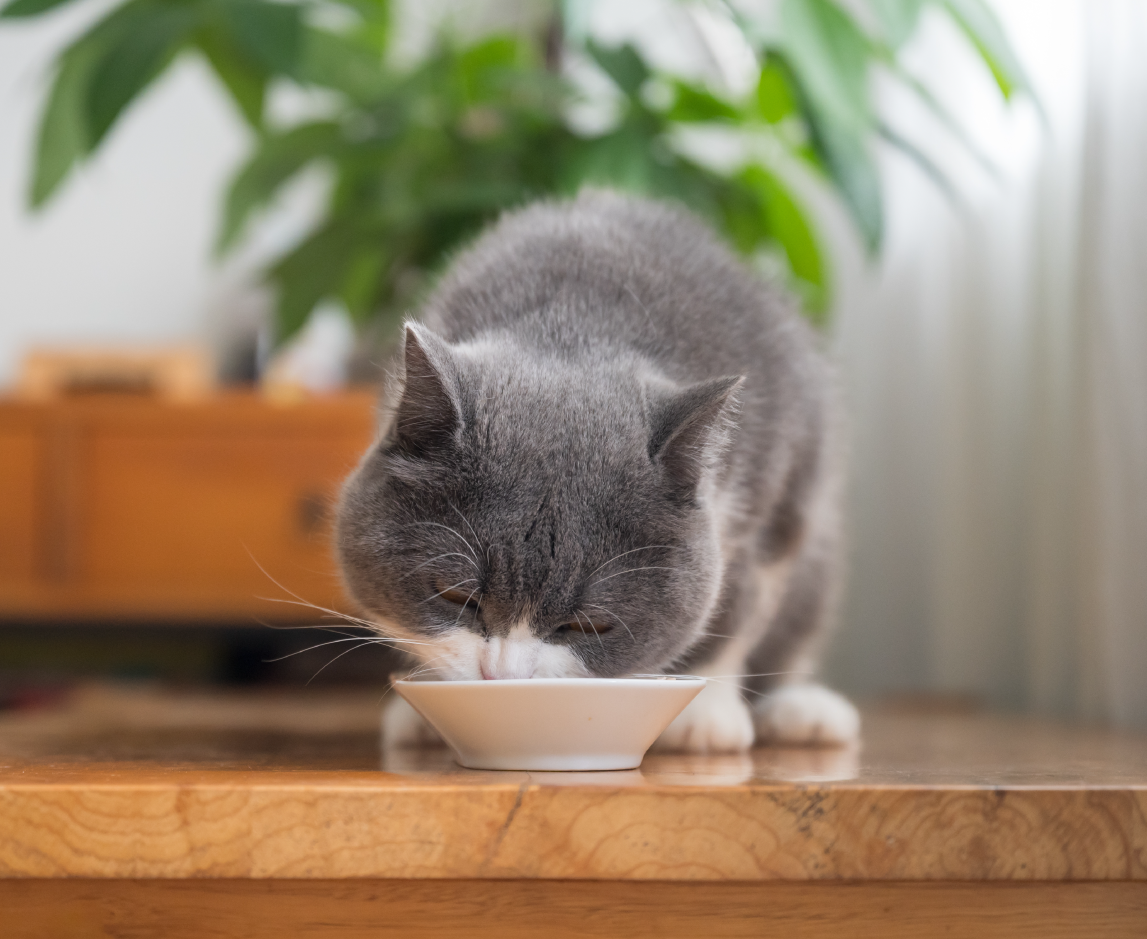Since cats are fiercely independent and sometimes mysterious little creatures, it can be difficult for pet parents to tell the difference between a minor issue and a serious health problem. That’s why it’s crucial to understand the signs and symptoms of the most common cat health problems, including FIV, FeLV, diabetes and more.
Read on for a closer look at common cat diseases, including symptoms and treatment outlooks. Remember: If your cat is exhibiting any alarming symptoms, contact your veterinarian. This article is purely for edification purposes and is not meant to help diagnose disease.
1. Kidney Disease
Kidneys filter out waste and regulate blood and water levels. If there is a breakdown or deterioration in the kidneys, cats can develop acute renal failure or chronic kidney disease. Acute renal failure typically develops quickly and can be reversed if it’s diagnosed in time. Chronic kidney disease cannot be cured, but early diagnosis and proper care can ensure that the feline lives a high-quality life.
Kittens can be born with kidney disease, and as cats get older, the kidneys can begin to fail. Infections, trauma, blockages and ingesting poison can also cause kidney issues. If left untreated, kidney disease can lead to other health problems.
A medical diagnosis that includes bloodwork and urinalysis is required to diagnose kidney disease. Some common signs that something may be wrong include:
• Frequent urination
• Weight loss
• Drinking a lot of water
• A dry coat
• Vomiting
• Diarrhea
• Bloody or cloudy urine
2. Dental Disease
The Cornell Feline Health Center reports that between 50% and 90% of cats over the age of four suffer from some type of dental disease. The most common feline dental diseases are gingivitis, periodontitis and tooth resorption — all of which can have varying degrees of severity. However, most cases of dental disease can either be prevented or treated with the proper care.
In some cases, a gum or tooth disease can cause severe pain and discomfort, which can affect a cat’s quality of life. Some cats may stop eating because of pain, which can lead to malnutrition and other health concerns.
Here’s a look at the three most common feline dental diseases:
- Gingivitis: This is a condition that causes painful inflammation of the gums, usually as a result of plaque buildup.
- Symptoms: Redness, swelling, discomfort or bleeding gums
- Periodontitis: Gingivitis that is left untreated can result in periodontitis. This occurs when there is damage to the soft tissue of the gums or the bone that supports the teeth.
- Symptoms: Similar to gingivitis, as well as an inability to eat, halitosis and drooling.
- Tooth Resorption: This occurs when the inside structure of a tooth breaks down. Tooth resorption has unknown causes and is the most common reason for tooth loss in cats.
- Symptoms: Pain, drooling, turning head to the side while eating or an inability to eat.
3. Diabetes
According to the ASPCA, cats can suffer from diabetes if they are unable to produce insulin or have an inadequate response to insulin. While diabetes in cats is a serious concern, it can be managed — some cats even go into remission with the proper care.
Feline diabetes can be caused by genetics, pancreatic disease or obesity. Symptoms of diabetes in cats include:
- Weight loss
- Increased thirst and/or urination
- Lethargy
- Dehydration
- Change in appetite
- Sweet-smelling breath
4. Feline Immunodeficiency Virus (FIV)
As the name indicates, FIV is a disease that compromises a cat’s immune system, leaving them vulnerable to additional infections or illnesses. Since FIV is most commonly passed from cat to cat through bite wounds, outdoor male cats who get into fights are most likely to develop the virus.
FIV is diagnosed through bloodwork. There’s no cure for FIV, but infected cats can live normal lives if the condition is managed properly. FIV often goes undetected and affected cats may not experience symptoms until years after infection. Symptoms may progress as the cat ages and can include:
- Gingivitis
- Loss of appetite
- Poor coat condition
- Fever
- Chronic or recurring infections
5. Feline Leukemia Virus (FeLV)
FeLV is a cancer-causing retrovirus that is spread through cats’ saliva, blood, feces or urine. Alley Cat Allies reports that most cats get FeLV from their infected mothers at birth or through contact with other cats, such as through mutual grooming. FeLV can weaken the immune system and cause severe anemia, making the cat vulnerable to other diseases.
Symptoms on FeLV include:
- Seizures or neurological disorders
- Various eye conditions
- Persistent diarrhea
- Persistent fever
- Skin, urinary or respiratory infections
- Weight loss
- Loss of appetite
FeLV can cause leukemia, lymphoma and infertility. Although there is no cure for FeLV, cats can live long healthy lives with the proper treatment.
6. Cancer
Lymphoma is the most common type of cancer affecting cats, but many different forms of the disease can occur. While a tumor often appears indicating cancer, it is not the only symptom, nor are all tumors cancerous. Many cases of feline cancer can go unnoticed, making routine veterinary exams paramount to early detection to improve treatment outcomes.
Symptoms of feline lymphoma include:
- Weight loss
- Anorexia
- Diarrhea
- Vomiting
Cats who are positive for FIV or FeLV have an increased risk of developing cancer. Other factors like diet and exposure to secondhand smoke are also risk factors. Genetics may play a role too, as Siamese cats are more likely to develop cancer than other breeds.
7. Obesity
Generally, a cat weighing 20% more than their ideal weight is considered obese. Feline obesity shortens a cat’s lifespan and makes them more susceptible to diseases and health conditions including:
- Diabetes
- Joint problems
- Cancer
- Heart disease
If you are concerned that your cat may be obese, contact your veterinarian. They will determine an ideal weight goal based on your cat’s overall health and recommend a new diet plan to help them shed some pounds.
8. Pancreatitis
For cats and humans alike, the pancreas performs vital functions in the digestive process. Pancreatitis develops when the pancreas becomes inflamed, and in cats it is also usually accompanied by inflammation in the liver and intestines.
The cause of pancreatitis in cats is unknown, but some felines with diabetes or inflammatory bowel disease may be at a higher risk. Symptoms of pancreatitis include:
- Vomiting
- Fever
- Abdominal pain
- Decreased appetite
- Diarrhea
9. Hyperthyroidism
Hyperthyroidism is an endocrine disease that affects middle-aged and older cats. It is most commonly caused by benign growths on the thyroid gland that increase its size and function, leading to an increase in the concentration of thyroid gland hormones.
Signs of hyperthyroidism in cats include:
- Excessive amounts of energy
- Increased appetite
- Weight loss
- Restlessness
A veterinarian will order lab tests to diagnose hyperthyroidism. The right treatment can reduce functioning thyroid hormone levels and help cats live a healthy, normal life.
10. Broken Bones
As with humans, cats can break bones when too much stress or pressure is applied. If a cat sustains a broken bone, they should receive veterinary attention right away for proper diagnosis and treatment to minimize long-term effects.
11. High-Rise Syndrome
Cats are known for their ability to land on all fours from great heights, but if they fall, they may still suffer serious injuries. This is known as high-rise syndrome, and can result in broken limbs, fractured teeth and other serious injuries.
12. Sneezing
An occasional sneeze may be nothing more than just plain adorable. However, if sneezing is persistent and accompanied by other symptoms (lethargy, loss of appetite, nasal discharge) it may be a sign of a respiratory infection. For more details, see our article: Why Do Cats Sneeze?
13. Diarrhea
Diarrhea can be uncomfortable for the cat and could possibly be a sign of a serious issue. While the occasional loose stool does not necessarily warrant concern, persistent diarrhea should be investigated by a veterinarian.
14. Vomiting
Cats are notorious for developing hairballs and eating too fast, two things that can cause an upset stomach and vomiting. There can be other, more serious reasons for vomiting, which we explore in this article: 10 Reasons Why Cats Vomit.
15. Fleas
Cat fleas are the most abundant type of flea species on the planet and they are incredibly hard to eliminate. Since these fleas can carry diseases that are harmful to both cats and humans, prevention is key. Keep fleas away by regularly cleaning where your cat hangs out and using veterinarian-recommended prevention products.
16. Tapeworms
These intestinal parasites affect both cats and dogs, and are most often carried through fleas. Tapeworms are typically ingested by the pet while they are grooming, and may be noticeable in the cat’s feces. It’s rare for tapeworms to cause severe issues, but if they enter the stomach, the cat may vomit them up.
17. Eye Problems
Cats can be affected by eye problems such as cataracts, conjunctivitis, uveitis, glaucoma or progressive retinal atrophy. Fortunately, many of these can be successfully treated if discovered early, which again emphasizes the importance of routine veterinarian check-ups.
18. Heartworms
Heartworms are more common in dogs, but these parasites can also choose feline hosts. While a blood test is required for an accurate diagnosis, common signs of the presence of heartworms include respiratory distress such as coughing or labored breathing.
19. Rabies
In the U.S., cats are the most common domesticated animals affected by rabies. If bitten by a rabid animal, a cat will show behavioral changes in addition to neuromuscular effects. It is of paramount importance to keep your cat’s rabies vaccines up to date. If possible, you should also keep your cats indoors to prevent them from being bitten.
20. Ringworm
Ringworm is a fungal infection that can affect nearly every type of domesticated animal and humans. It develops through direct contact with the fungus and can cause itching, pain, redness and dryness. Fortunately, ringworm can be treated with a combination of topical and oral medications.
21. Ear Mites
Ear mites are tiny parasites that live in a cat’s ear canal. Abnormal itching or grooming of the ears can be a sign of the presence of ear mites. Treatment almost always involves thorough cleaning of the ear and possible symptom management through medication.
22. Constipation
Constipation can cause cats to strain while attempting to defecate, leading to abdominal pain. Some constipated cats might only pass small amounts of diarrhea-like feces that may contain blood due to the straining. A cat showing signs of constipation as well as lethargy, reduced appetite, distention or vomiting should receive veterinarian attention.
23. Food Allergies
If a cat has food allergies, they may exhibit a skin irritation that results in a rash and/or itching, and diarrhea, constipation and vomiting can also occur. Beef, fish, chicken and dairy products are the most common causes of cat food allergies. It’s not uncommon for dietary changes to cause minor digestive irregularities in cats, which is why a slow transition to new food is strongly recommended.
24. Feline Lower Urinary Tract Diseases (FLUTD)
FLUTD refers to the conditions that affect a cat’s bladder and urethra. Symptoms include difficulty or pain when urinating, blood in the urine, increased urination and urinating outside of the litter box. FLUTD can have many causes and requires a diagnosis by a veterinarian.
Hopefully, with heightened awareness about common cat health issues, we can aid our feline companions in living their best lives. As Amanda Nichols of the UK’s Cat’s Whiskers Veterinary Clinic reminds us, “One of the best ways we can help owners have their pets with them for longer is by ensuring they eat a good quality diet and maintain a healthy weight, and body and muscle condition score.”
Related reading you might enjoy:






